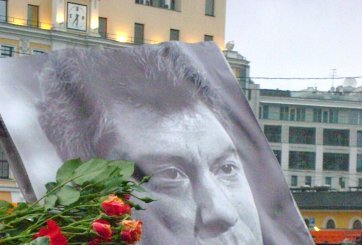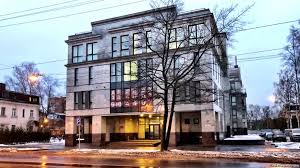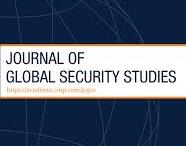(PONARS Eurasia Commentary) Less than two months ago—a world apart—we were remembering Boris Nemtsov, five years after his passing. Nemtsov, who was shot dead in 2015 a few hundred meters from the Kremlin, turned into a symbol, an ideal of a free and democratic Russia, one that set out on the path of freedom but never arrived there.
A few weeks after the tragic anniversary, Russia’s Constitutional Court approved amendments allowing Vladimir Putin to stay at the helm of the Russian state until 2036. The plebiscite over the constitutional changes planned for April 22 was postponed in the face of COVID-19. Not many people doubt that this postponement would deter the Russian president from staying on. The presumed stability achieved under Putin in Russia appears to require Putin himself to be in power.
This black-and-white image of free and democratic Russia symbolized by Nemtsov and Russia that is unfree and led by a KGB officer who is turning himself into a tsar is of course overly simplistic. The actual historical and political linkages between these two actors representing two different Russias are more complex.
To make Putinism possible, Nemtsov and other Russian liberals were made into a bogeyman associated with the painful transition of the 1990s. The current pandemic crisis and its economic implications bring the tragic experiences of the ‘90s back—undercutting the Kremlin’s central legitimacy tool. Will Putinism survive this return?
Russia of the ’90s as a Legitimation Strategy
Nemtsov and Putin are the main heroes of my 2011 book Political Consequences of Crony Capitalism Inside Russia. Nemtsov, the youngest Russian regional governor at the time, presided over an ambitious liberal economic reform in Nizhny Novgorod. A showcase of market reforms in Russia, the region attracted world leaders, including Margaret Thatcher, who came to see the reforms in action in 1993. In 1997 Yeltsin brought Nemtsov to Moscow. Nemtsov has mentioned that Yeltsin, at some point, even saw him as his successor.
The region that Nemtsov left behind evolved into political mayhem. Without him, it became a fragmented polity embattled by competing oligarchs and political cronies. The public anger manifested in protest voting.
Some observers turn to the proverbial Russian matrix of a personalized power system propped up by homo post-sovieticus’ quest for a strong hand to explain the fate of competitive politics in Russia. I argue that the roots of the problem are elsewhere. I zero in on crony capitalism—a system based on privileged access to wealth-creating opportunities that depend on proximity to state power.
Karen Dawisha named it even simpler—a system of kleptocracy—in her 2015 book about Putin and “who owns Russia.” Losing state power in such a system means a radical shake-up of the group that enjoys access to economic privileges. The stakes associated with political loss in such a system are enormous.
The foundations of this system in Russia were laid in the 1990s. Putin’s presidency and the entire two decades associated with the current leadership in Russia have been framed in opposition to the 1990s. The bogeyman of the 1990s was turned into a firm legitimation foundation for Putin’s leadership. Boris Nemtsov, a liberal overseeing the early foundations of the system, joined the opposition to Putin in the 2000s and was among the few who openly talked about massive corruption, theft and fraud in the system. The Kremlin’s strategy of scapegoating the 1990s along with all the liberals who laid the system’s foundations disarmed Nemtsov’s ammunition. He was one of the system builders, although undoubtedly his hope was not for the current outcome.
Meanwhile, Putin not only maintained the basis of crony capitalism in Russia but strengthened it. He replaced electoral competition with centralized control and his own persona turned into the main symbol of the Russian state and its newly found international status. The Kremlin’s centralized media-spin machine and selected group of oligarchs are well known.
Given that Putin was able to pin himself as the symbol of the Russian state, there is strong inertia to keep his leadership going as a tool of maintaining the economic status quo. The stakes associated with his departure are too high for those who enjoy privileged access to sources of (great) wealth.
Enter the Virus
The global pandemic found Russia at a vulnerable moment: its political system was in a transition mode, its economy was slowly recovering from a post-2014 downturn, and its healthcare system was emerging from the painful process of optimization that produced numerous hospital closures, mergers and downgraded (in some cases) and disgruntled (in many cases) medical personnel.
Many observers are noting that the ‘90s are coming back to Russia. Growing unemployment, lost businesses, social destitution and an inevitable fallback to household reliance on producing food products from the summer dachas (individual plots of land many people own) are all in the making. The local governments have already started distributing food aid packages to low-earning families and families with many children and families with disabled children. Other types of social assistance programs would be increasingly necessary but hard to develop given dwindling budgets and financial squeeze also associated with low oil prices.
This rapidly evolving crisis is placing massive pressure on Russia’s political system and all of its “design elements.” The Kremlin’s information strategy of beefing up the Russians’ national identity that worked for a few years after Crimea annexation has lost its potency from around 2018 and was made completely moot by the unfolding social and economic disaster. The power vertical constructed as the institutional basis of Putinism is now being quickly converted into a decentralized system of governance in which governors have to take initiative and responsibility for policy-making in response to COVID-19.
Many of the governors are not well-suited for this new role. The Kremlin can shift blame and replace the governors but it cannot hide the reality of a dis-functional system of governance in which the interests and value of individual life have never become a priority. COVID-19 forces Russian society to confront the realities of the system that have been long disguised from the public eye through skillful information management and attention diversion. Blaming Nemtsov, liberals and the ’90s will not work anymore to prop the system.











